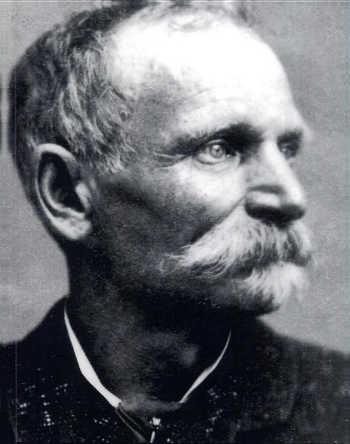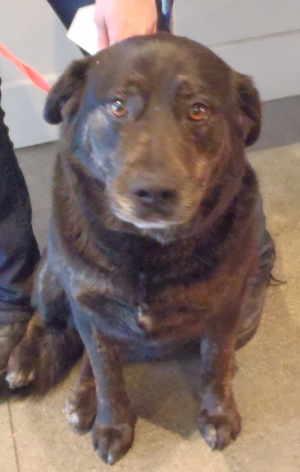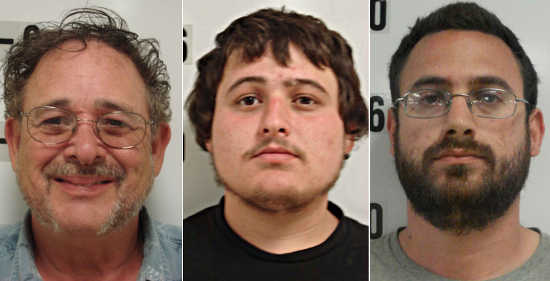LAKEPORT, Calif. – On Thursday a jury began deliberations on whether two brothers from San Francisco took part in a June 2013 home invasion robbery in Clearlake Oaks in which a young man was beaten and shot and his family terrorized.
Closing arguments in the trial of Dion Davis, 27, and his brother, Gregory Elarms, 30, wrapped up on Thursday morning, after which the jury was given instructions and sent to start its deliberations.
The men are among five individuals who the prosecution says carried out the home invasion on June 26, 2013, at the home of Ronnie and Janeane Bogner, whose adult son was shot during the incident.
Davis is alleged to have shot Jacob Bogner and to have shot at Clearlake Police Lt. Tim Celli, and so is charged with attempted murder. He also is charged with robbery, burglary, assault with a firearm on Bogner and Celli, car theft, theft, vandalism and conspiracy, as is Elarms.
The trial of Davis and Elarms began at the end of January. The prosecution and defense rested their respective cases last week.
Closing arguments began on Wednesday morning with District Attorney Don Anderson, who is personally handling the case's prosecution, with Deputy District Attorney Daniel Flesch as co-counsel.
Anderson was followed by Davis' defense attorney Bill Conwell and Elarms' attorney Doug Ferguson. Anderson finished up with his rebuttal to the defense arguments on Thursday morning.
Before the prosecution and defense addressed the jury, retired Judge James Garbolino – who came from Placer County to hear the case due to the local judges recusing themselves – read the jurors a stipulation agreed upon by both the attorneys in the case. Garbolino advised the jurors that they must accept the stipulations as facts, as both the prosecution and defense agree on them.
The stipulations include that on June 26, 2013, the Chico Police Department conducted a recorded interview with Jacob Bogner and took photographs, sending it to the Lake County Sheriff's Office on July 23, 2013. However, Det. Doug Dahmen, a lead detective in the case, didn't turn that interview over to the prosecution until August 2014. It was provided to the defense shortly thereafter.
The other stipulation was that Elarms was in custody in the San Francisco correctional facility from July 1, 2013, through April 3, 2014, on an unrelated matter. He was arrested in San Francisco on July 2, 2014, on the Bogner case and transferred to the Lake County Jail, where he was released on July 25, 2014, then rearrested in San Francisco on Aug. 15, 2014, and returned to the Lake County Jail.
The prosecution's case
In addressing the jury, Anderson touched on legal concepts jurors would need to take into account during deliberations before summing up his theory of how the crime took place.
Anderson said the plot to carry out the robbery began with Tyler Gallon – another defendant in the overall case who hasn't yet stood trial – owing Davis $14,000 after a rental car he had borrowed was impounded.
Gallon and Sean Foss – a former employee of the Bogners' company Weed Tech – talked, and Foss initially suggested going to the Spring Valley area to conduct a home invasion and steal 300 pounds of marijuana.
Foss then suggested going to the Bogners' home – where he claimed they had “100 guns” – to steal guns, money and a truck. Foss also is charged in connection to the robbery but has yet to stand trial.
Davis, Elarms and Davis' girlfriend, Jenaya Jelinek, came to Lake County on June 25, 2013, and met up at the home of one of Davis' relatives. A party took place that night and at one point Davis, Elarms, Foss and Gallon went to case the Bogners' home, which caused the family's dog to bark for some time, Anderson said.
The following morning, Jelinek – who told authorities she believed they were going to conduct a marijuana buy – drove the five men to the Bogners’ home in a Chevy Malibu that she said Davis had bought for her, dropped them off and was told to wait down the hill.
Janeane Bogner came outside, saw the men getting out of the car with masks on – except, Anderson said, for Elarms – who asked if “Lonnie” or “Ronnie” was at home.
She went back into the house where her young grandchildren were and the men forced their way into the house. Janeane Bogner struggled with a man who had dreadlocks – believed to be Elarms – pulling off his hoodie.
She yelled for help to her son, who came out and said he saw Davis pointing a .40-caliber Glock handgun at him. Davis told him not to move, adding, “This is the day that you are going to die.”
Davis told Jacob Bogner to get on the floor, which he did, with Davis going back to the foyer. By that point, Janeane Bogner had retreated to a bedroom to protect her grandchildren.
Jacob Bogner got up and came out of his bedroom, was chased by Davis back into the room and then locked his door. Davis shot through the door, hitting Jacob Bogner in the left leg, then broke through the door and demanded money, Anderson said.
Anderson said Davis then went back to the foyer, and Jacob Bogner, while wounded, again attempted to come out of his room. At that point Davis went back and pistol-whipped the wounded man.
The defendants are alleged to have stolen $121 in cash, two older pistols and a pellet gun, and Janeane Bogner's 2002 Cadillac Escalade, which they pushed over the embankment on Sulphur Bank Road between Clearlake Oaks and Clearlake.
In Clearlake, they would be spotted by Celli, who pursued them into the area of 16th Street, where the men fled the car and ran across a wooded area. Anderson said Davis shot four times at Celli, missing him by about 5 feet. The bullets were 4 feet off the ground, or at chest level.
Jelinek, still inside the car, was taken into custody immediately, while Davis, Foss and Gallon would go to Davis' relative's home and, after negotiations with law enforcement, would surrender later that day.
The morning after the home invasion, detectives with the Lake County Sheriff's Office and District Attorney's Office Chief Investigator Craig Woodworth served a search warrant at the home where the standoff had occurred.
Anderson said they found a cell phone, a case for a 9 millimeter pistol, a pair of black jeans with $121 in the pockets, three black hoodies like Janeane Bogner described and a skeleton mask like the one described by Jacob Bogner which Gallon would confess he wore.
Under the house's porch the investigators also found a shotgun, a 9 millimeter pistol, and a .40 caliber Glock with an extended 22-round magazine with 15 rounds still in it plus one in the chamber. Gallon would tell investigators that he put the guns there.
A Department of Justice firearms expert who tested that Glock pistol said the four shell casings found in the wooded area where Celli was shot at as well as a casing taken from outside Jacob Bogner's bedroom all came from that handgun.
Elarms would not be connected to the crime until the following year. Anderson said a Department of Justice fingerprint expert found Elarms' prints on the car near where Gallon said he was sitting.
Anderson dealt with the credibility of his witnesses in the case, including Jelinek, who testified in the first days of the trial. Last year she reached a plea agreement for second degree burglary and has since been released.
He acknowledged that Jelinek was lying when she said she couldn't tell if Elarms was the man in the backseat of Davis' car on the ride to Lake County on June 25, 2013. According to testimony from Davis' and Elarms' mother, Regina McGee, Jelinek had been a frequent visitor to McGee's home, where Elarms lived.
Anderson defended the credibility of Jacob Bogner, who he said has Asperger syndrome, which a defense expert said affects memory and facial recognition. The defense also claimed he was fatigued from little sleep and had a blood alcohol level of up to 0.05 based on an extrapolation of tests taken at the hospital after the shooting.
Anderson said Jacob Bogner gave detailed, credible statements about the incident and unequivocally identified Davis as his shooter.
While Janeane Bogner initially misidentified San Francisco resident Dexter Currington as being involved, that matter is a red herring and has no bearing on the case of Davis or Elarms, Anderson said. “Dexter Currington is not on trial here. Dexter Currington had an injustice done to him.”
Regarding issues with Dahmen, “This is a little bit difficult,” said Anderson, acknowledging that Dahmen made some “huge mistakes” in investigating the case.
Those include interviewing Currington in the Lake County Jail shortly after his arrest in September 2013, at which time Currington provided the detective with alibi information and witnesses to back it up. Dahmen did not, however, follow up with those witnesses, a fact he admitted on the stand.
“He interviewed Dexter and didn't do a darn thing about it for roughly six months,” not until Currington and his attorney brought the information forward to the District Attorney's Office, Anderson said. The charges against Currington were immediately dropped at that point.
Anderson acknowledged Dahmen's “negligence” – “I've got other words I want to use but I'm not going to,” he said – but added that those issues don't affect Davis or Elarms. Nor does Janeane Bogner initially identifying Currington.
He defended Gallon's credibility, noting that he gave the most complete, step-by-step account of the robbery. Anderson explained that Gallon's version could be verified by investigators. Gallon, he added, isn't immune to prosecution for having agreed to testify against Davis and Elarms.
Anderson told jurors they would have to decide of Davis intended to kill Bogner and Celli, which he said could be done by looking at his behavior. Referring to the Glock with its extended magazine, “That gun is a killing machine. That's what it's made for,” said Anderson.
He also repeated Davis' alleged statement to Jacob Bogner, “This is the day you are going to die.”
Anderson added, “He tried to kill him. He tried to follow through with that statement,” pointing out that Davis returned and pistol whipped the wounded man.
Defense attacks prosecution theory
Key points to the defense's arguments in favor of Davis and Elarms include Janeane Bogner's early misidentification of Currington as a suspect based on a photo lineup presented by sheriff's detectives at the start of July 2013.
Davis' attorney Bill Conwell also keyed in on the series of mistakes by Dahmen, including not recording – or, Conwell suggested, recording and destroying – the July 2, 2013, interview with Janeane Bogner in which she misidentified Currington; not turning over the Chico Police interview with Jacob Bogner for a year; and his failure to follow up on Currington's alibi information.
Dahmen admitted on the stand during testimony that he didn't do any followup on that potentially exculpatory information. He wouldn't write and submit a report on the interview until March 2014 after he was reminded by his supervisor that it existed.
In a hearing last week, Dahmen was recalled to the stand to ask a series of followup questions from the defense and Garbolino on his handling of the case. Accompanied by an attorney, when Dahmen was pressed on details of his performance, he repeatedly replied, “I can't recall.”
“His explanation, 'I can't recall,' is patently ridiculous,” Conwell said during his closing arguments on Wednesday.
Failing to follow up on exculpatory information or record interviews were among the things that Conwell told the jury are not normal for an investigation. He added, an improper investigation leads to improper results.
Other irregularities Conwell cited included Dahmen not showing Jacob Bogner a photo lineup. Instead, Jacob Bogner had identified Davis based on his picture posted in a Lake County News story shortly after the arrests that Bogner was able to access online while in the hospital.
Conwell also challenged Jacob Bogner's testimony based on his Asperger syndrome, which one of the defense's expert witnesses said makes it difficult for those who have it to do facial identifications. He maintained Jacob Bogner had been drinking the previous night and had little sleep, which he said could impact the accuracy of his eyewitness testimony.
In addition, Conwell said Bogner had told Chico Police that his assailant was clean shaven, although Davis' mugshot from the day of arrests showed him with some facial hair. In initial interviews, Jacob Bogner also described his assailant as possibly having a tattoo on his hand, which Davis doesn't have.
Rather, Conwell suggested that circumstantial evidence pointed to Gallon – who is clean shaven and who Conwell maintained does have a tattoo on his hand – being the shooter.
Jacob Bogner's account was influenced by other peoples' statements, online news accounts and information from Twitter and other parts of the Internet, said Conwell.
Conwell argued that this is a tainted eyewitness case based on issues with cross-race identification – which his expert said is a complication – and the “hindsight effect,” which causes a person's memory to change to fit the known outcome.
He raised issue with Janeane Bogner's misidentification of Currington because of the big difference in appearance between him and Elarms.
Conwell also told the jury that Gallon lied “many, many times” to investigators, gave a different seating orientation in the Malibu than that witnessed by Celli and stated he had a .40 caliber Smith and Wesson handgun that has never been located.
The ballistics evidence, Conwell said, didn't back up the idea that the shooter was trying to kill either Jacob Bogner or Celli.
“When the prosecution is making these assertions, look at the evidence,” he said, adding that the prosecution had failed to prove Davis had the .40 caliber Glock.
Ferguson told the jury that the prosecution had the wrong man in the case of Elarms. Citing his love of movies, Ferguson referred to the Akira Kurosawa film, “Rashomon,” which tells the story of several people who witness a crime and how each one comes away with a different story, and the movie “The Wrong Man” starring Henry Fonda.
“That's my theme,” he said.
Ferguson said Elarms was working at an apartment complex renovation project in San Francisco on the day of the home invasion. Three of Elarms' coworkers took the stand at trial to testify to that.
He pointed out that the case had a lot of testimony but little physical evidence, and he suggested the case could easily have been settled if more fingerprints and DNA evidence had been collected.
Janeane Bogner had described reaching all the way up to pull the hoodie off one of the suspects. Ferguson said she's 5 feet 6 inches tall and Elarms is 5 feet 9 inches tall, not enough of a height difference to match her account.
As for Dahmen's part in the case, “He may be looking for new work, I don't know,” said Ferguson, faulting the detective's work.
He suggested the investigators were using a “tell,” or a cue to get what they wanted in identifications, and not using double-blind procedures. Ferguson referred to studies that show the difficulty in identifying people of other races; the Bogners are white and Davis and Elarms are black.
As for the issue of time, “Memory fades very quickly,” said Ferguson, citing data that memory accuracy drops by a third in the first few minutes, another 15 percent after 10 minutes, declines to 55 percent over four hours and then to 50 percent after a week.
Janeane Bogner was interviewed by detectives a week after the home invasion, Ferguson said. “There was bad memory formation,” he said, adding there was no reason to believe she identified the wrong person on purpose. “She believed the person that she identified was the right person.”
He alleged that the District Attorney's Office was perfectly content that that they had their man in Currington, which later was proven to be wrong. “Maybe Dahmen dropped the ball, but nobody else picked it up.”
Like Conwell, he pointed to the significant physical differences between Currington and Elarms. “Decide for yourself how you could make a mistake like that,” he said. “She picked the wrong man.”
Some of the prosecution's own witnesses, he said, didn't place Elarms at the scene, and questioned the veracity of Gallon's statements, calling him “a desperate young man” facing life in prison who had five months in jail to figure out an angle. In that time, he never pointed out Currington was the wrong man.
Ferguson questioned what Elarms' motive would have been to make the long trip to Lake County.
“There is reasonable doubt in this case and you must find my client, Gregory Elarms, not guilty,” Ferguson said.
The prosecution responds
In a rebuttal that lasted just under an hour on Thursday morning, Anderson maintained there was more than enough evidence to convict Davis and Elarms beyond a reasonable doubt.
He once again acknowledged Dahmen's mistakes but held that those involve Currington, not Davis and Elarms, and is therefore a defense smokescreen, as many other people involved in the investigation did excellent work – from the 911 dispatcher to evidence technicians, the SWAT team and police officers.
Referring to the original 911 records, Anderson called it a great piece of evidence, noting the clear and immediate descriptions that both Jacob and Janeane Bogner gave of what had happened.
He challenged the defense's eyewitness testimony expert, stating that Jacob Bogner “has better memory than most of us.” He also dismissed defense assertions that Jacob Bogner's account was impaired by alcohol consumption the night before. Anderson said even the Department of Justice doesn't use medical records to determine blood alcohol content, but a specific testing method.
As for the suggestion that Bogner was fatigued or sleepy, “Being shot and being pistol-whipped is going to wake you up really quick,” said Anderson.
Anderson said there was no evidence to support that Gallon had the gun, and again pointed out that investigators were able to confirm eight different aspects of Gallon's story. “We can verify his story. His story makes sense.”
He further suggested that Elarms' coworkers' testimony was “actually too good to believe,” and appeared to be rehearsed.
While both Elarms' girlfriend, Shunae Morgan, and his mother testified to him being involved in a birthday party for his son on July 1, 2013, Elarms actually was in custody that day, and Anderson questioned if that party ever actually happened, pointing out no evidence had shown that it did.
As for Elarms' motive, “That's easy,” said Anderson. “It's money. It's guns. That's your motive. That's what they were doing. They were going after money. They were going after guns.”
He defended the work his staff did to measure the trajectory of the bullets shot at Celli and challenged the defense's contentions that Davis didn't try to kill Jacob Bogner or Celli. If killing them wasn't his intent, what was he planning? Anderson asked.
Warning shots are fired up in the are, not in such a way as to come within several feet of a person, he said.
He urged the jurors to look at the two shootings together. “Don't handle them separately. Handle them as one.”
“You have some innocent victims and they deserve justice. And you can give them that justice,” he said, asking for a guilty verdict.
By the end of the day on Thursday, Anderson said no verdict had been returned. The jury had, however, asked a question about in what order they were to consider the charges. He said they also listened to the 911 recording.
Deliberations are expected to resume Friday morning, he said.
Email Elizabeth Larson at This email address is being protected from spambots. You need JavaScript enabled to view it. . Follow her on Twitter, @ERLarson, or Lake County News, @LakeCoNews.




































